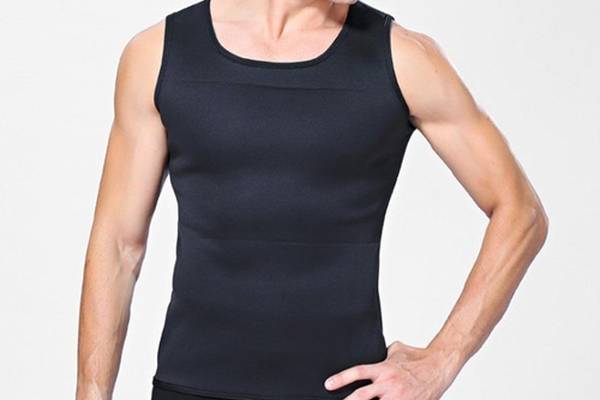
Is Neoprene Breathable? (Does Neoprene Make You Sweat?)
Not everything has to be breathable unless you live in one of those one-season areas of the world. Then every fabric you wear should be breathable. Breathability is just one criteria upon which to judge a good fabric. Different fabrics have different purposes and breathing is not always one of those purposes.
Is neoprene breathable? In a word, no. Neoprene is not breathable. It is made from rubber and is very elastic but breathing is not one of its specialties. Because of this neoprene will contribute to your sweating more than usual. It locks heat in making your body a lot warmer.
To learn more about neoprene and its lack of breathing, just continue to read our article. It has the information you need in order to use neoprene to its fullest potential. A few minutes of your time is all that is required.
Is Neoprene Breathable?
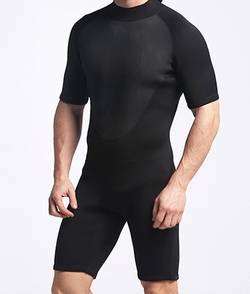
Neoprene is a fabric with a different purpose. Keeping you cool and comfortable is not one of those duties this fabric has. One of the duties of neoprene is to keep the water away from your body and it does this by creating a water layer making sure air does not escape.
This rubber-like material is not designed to make a fashion statement either. It is bulky, odd-looking at times, and has a protective purpose. That is why it is best suited for fishing, scuba diving, and handling snow issues during the wintertime.
Its lack of ability to breathe is what helps you stay warm when the icy wind blows on those very cold and stormy winter days. Or if you are an ardent fisherman, neoprene waders makes sure you stay drier than you would have if you didn’t wear them.
While neoprene doesn’t breathe, that doesn’t make it a bad fabric to use for different projects. In fact, it may be the best fabric for the project you are working on.
Are Neoprene Shoes Breathable?
It depends on if your neoprene shoes are made from open-celled or closed-cell foam. The closed-cell format does not breathe at all. It is like regular neoprene and keeps the moisture and the heat locked up right next to your body.
If the shoes are made from the open-celled foam, then your feet may be comfortable, and sweat less as you walk. It is said to be very breathable material. Then if those neoprene shoes are made from the regular neoprene material do not count on your feet becoming cool and comfortable.
Neoprene was designed to protect your feet fro the water puddles, the slush piles, and the melting snow. Along with the wind and low temperatures. That helps you fight off any colds you may get during the winter season.
When you have a long way to walk or travel, it is best to wear shoes that meet the challenges of weather. You can always change your shoes once you get to your destination.
Is Neoprene Breathable For a Mask?
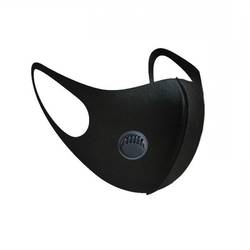
No, it isn’t. But that doesn’t make it a bad fabric to use for a mask. One good aspect that neoprene does bring to your face mask is its ability to resist water. You won’t get exposed to germs or toxins very quickly.
Plus, the material stretches so you can seal up your mouth and nose area and not let any harmful items come to your face through those edges that do not seal up with normal masks.
Also, the material is weather-resistant, which means that you can wear the same mask over and over and not spend more money replacing it. Even if you did replace the mask, the cost is not as expensive as masks made from other fabrics.
Then the material is between 3 and 5 mm thick which helps filter germs going in and going out from your face. The material can withstand extreme temperatures when made right so you do not have to worry about it being ruined at any time in any season.
Are Neoprene Seat Covers Breathable?
If you want a good form-fitting seat cover, then you will want to use a neoprene made version. This stretchy material can snap into place and really grab your seats and not let go. It is perfect for odd-shaped seats.
Even neoprene seat covers resist moisture. That means if you or your children spill anything on them, the seat cover should not be damaged. Also, the fabric wicks away moisture so they are easy to clean up, remain comfortable while sitting on them, and also keep their cool.
What that means is that you should not sweat a lot when sitting on neoprene seat covers. The seat stays dry and since it also resists heat, you should not enter a hot car and burn your back or rear end.
What makes neoprene seat covers a good choice is that they are very durable and should last you and your car for a long time. This fabric should help preserve the value of your car by letting nothing happen to your seats.
Are Neoprene Seat Covers Hot in Summer?
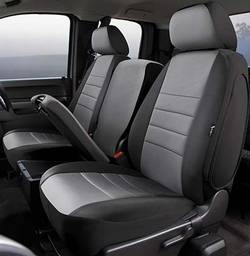
No, they are advertised as being able to keep their cool and resist heat. When you leave your car in the sun, you should be able to get into it without fear. The neoprene seat covers are on the job and making sure you can sit comfortably while you wait for the air conditioner to cool the interior.
In addition to that, this fabric should not get the sweaty feel or smell. Its moisture and heat resistance helps keep the sweat and heat away so you should be able to ride in peace and your nose should not be offended.
Two other positive aspects of this material are that, one, it is very customizable. That means you can design it to fit your preferences and how you want people to view you. Then two, it is a very affordable fabric so changing your seat covers should not bust your budget.
Finally, you should be able to feel comfortable once you install these seat covers. That helps when you have a lot of traffic to navigate.
Difference Between Neoprene And Breathable Waders
First off, the neoprene waders were designed to keep a fisherman war in extremely cold weather. There is no room for breathing designs as the purpose was to provide a shield from the cold when out on the water.
In warm weather, you may have been protected from the water but you often got too hot when you put on these waders. With breathable waders, this accessory allowed technology to redesign them to make sure they were comfortable to wear.
They have waterproof zippers, good breathable lining, and are very light. These waders do not last as long as neoprene but maybe longevity is not always the key when you want to be comfortable while fishing.
Another difference is that breathable waders are easier to get into than neoprene ones. They are made to be flexible and conform better to your body’s shape. Neoprene may be a little tight as it is a very elastic material that likes to snap into position very quickly.
Both styles of waders have their ideal situations with neoprene great for cold weather, float tubing, and other situations where you will be submerged for long periods of time. Breathable waders are better when the weather is nicer and you may only be submerged for short periods of time.
Neoprene vs Breathable Waders
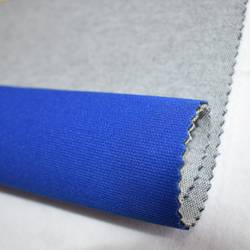
Each style of waders has its own specialties that the other cannot beat. For neoprene, it is the cold weather and the long hours of being in the water that makes it an ideal choice. But its drawback of overheating its owners makes it unfit for warm weather days.
Breathable waders may not be the best choice for cold weather or long underwater times but it is a good material when you are fishing or doing some water activity when the weather is nice.
Then the breathable waders may come with a removable liner. That helps when the temperatures get high and the sun beats down on you. Just remove the liners to stay cool and still take advantage of the breathable wader benefits.
You may end up owning a pair or two of both styles of waders. That is because your water activity is going to take place under different conditions and one or the other won’t meet them all.
Is Neoprene Sweaty?
This will depend on how you define sweaty. If you mean does the material create an uncomfortable situation where your sweat remains near your body or pools in awkward spots, then yes, neoprene may be called sweaty.
Or if you define it as non-breathable that creates heat and doesn’t allow it to escape, then yes, you can say that neoprene is sweaty. It is a rubber after all and it is made to not breathe nor let heat escape.
You may sweat more wearing neoprene especially if you put them on by mistake when the weather is nice and warm out. Think of neoprene as a solid barrier between you and the outside elements. Many people have worn this fabric on very cold days and have not felt the wind or the low temperatures.
You stay warmer wearing neoprene and if you wear this material when you hike in colder altitudes you may end up sweating by the time you reach your destination.
Does Neoprene Absorb Sweat?
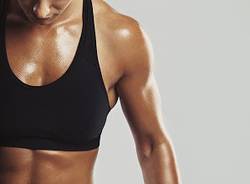
This is not a fabric that is designed to absorb anything. It is rubber and its greatest moisture characteristic is to wick away moisture if it can. When you are wearing neoprene clothing that is not made from the open-celled foam then expect to walk or run in your sweat as it will stay close to your body.
As will the heat your body gives off. Neoprene was designed to keep you warm and protected from the cold. That means it won’t absorb moisture. If your neoprene material, like seat covers, has an outlet for the sweat and moisture, it will wick it away very quickly and not retain that sweaty smell or feel.
If it doesn’t expect to be hot and sweaty by the time you take those neoprene items off. Then if you get the right thickness, you may feel nice and comfortable against the soft nature of the fabric, but you will still get hot and uncomfortable.
Is Neoprene Good For Summer?
Yes and no. Obviously, it is not a material you want to be wearing when doing normal daily summer activities. You will heat up and possibly overheat before you get from your car to the mall doors.
Normal summer weather and activities are not the times you need to wear neoprene. The yes part comes in if you are a fisherman or going to do a lot of water activities in cold water or cooler climates.
For example, Alaska has a summer but many of its streams and rivers are glacier-fed and extremely cold. Neoprene is ideal for those conditions. If you are hiking in the Rockies in the summer and get to high altitudes, you may want to consider wearing neoprene.
Those examples are just exceptions to the rule. Normally, you would not want to wear neoprene in the summer unless you do those activities or go scuba diving.
Some Final Words
If you want breathability, then you may want to consider some other fabric other than neoprene. This is not something you grab on the run when you are in a hurry to go out in the sun.
The material can be hard to get into and it is not made for summertime activities save for the few examples already given.

